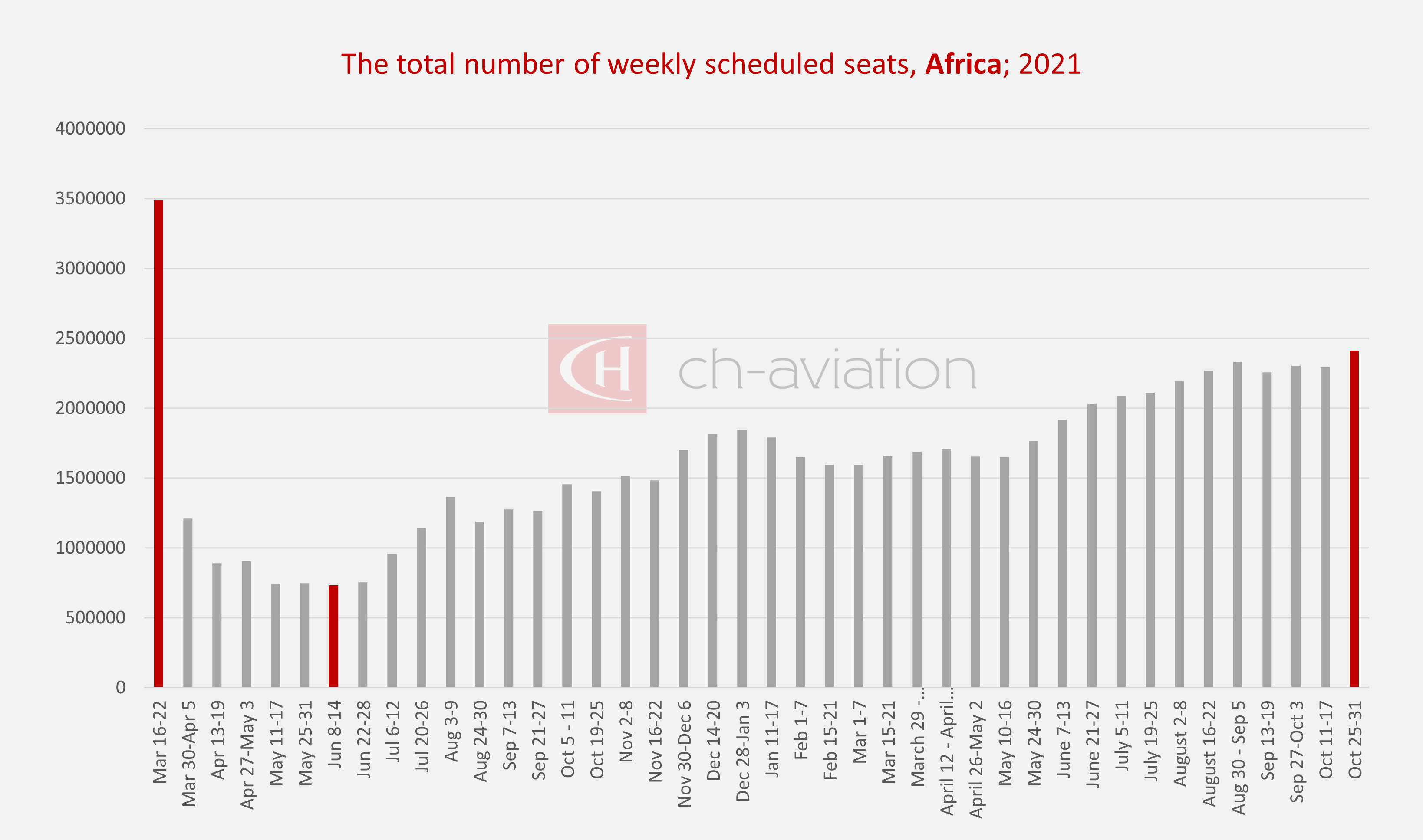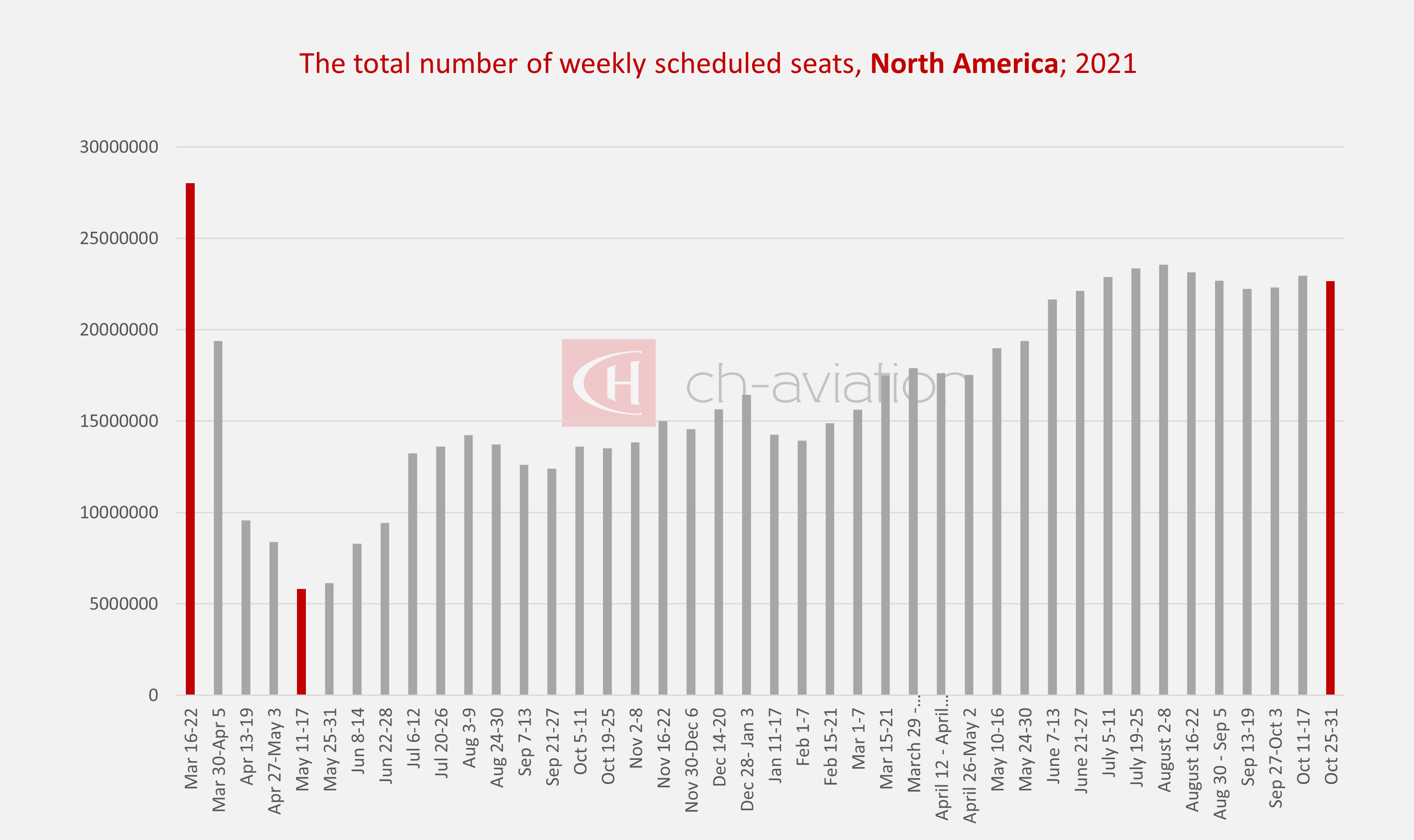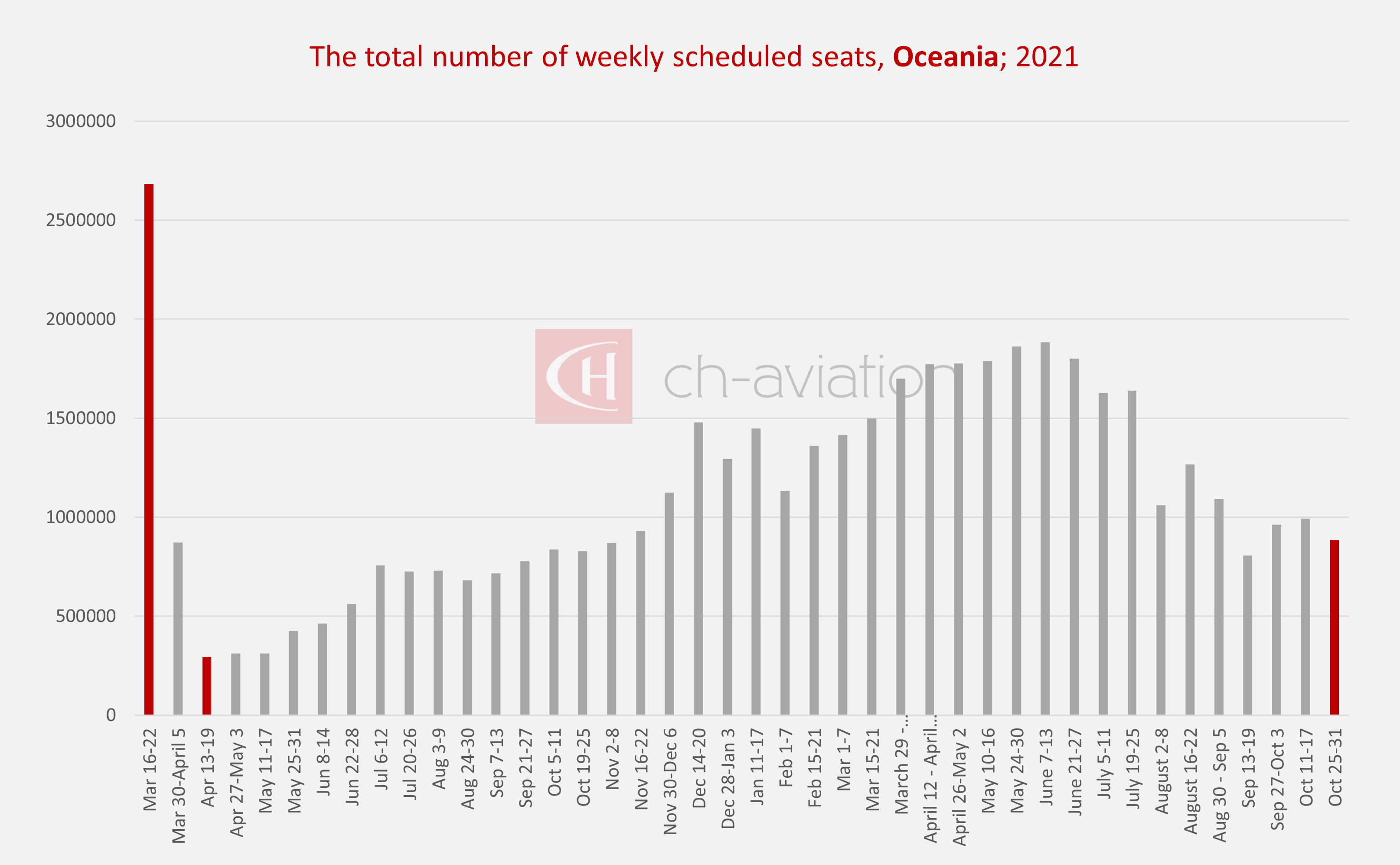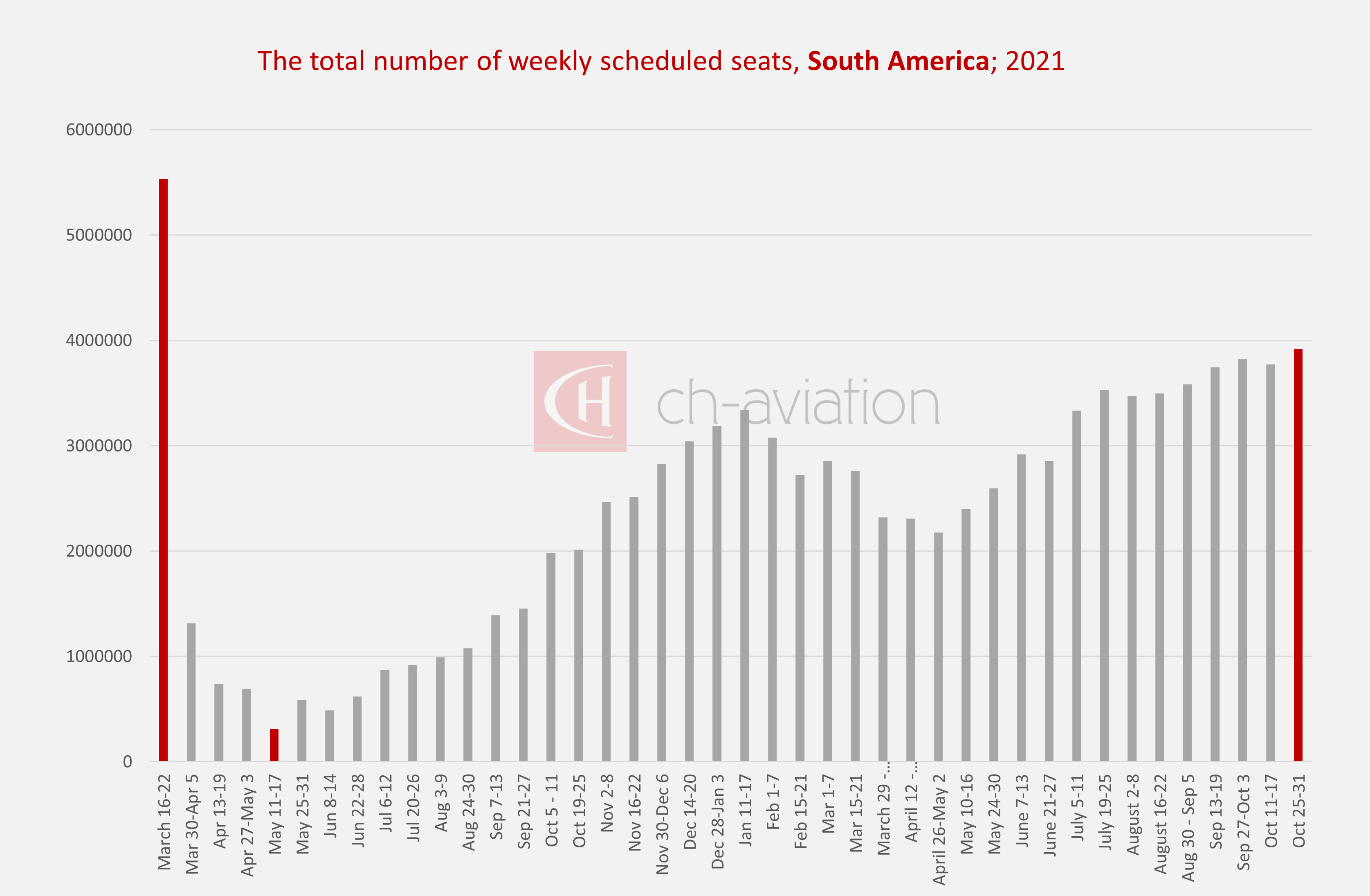Following a slight increase in the last week of September, the overall global capacity has since experienced a modest yet steady decline. At the end of October, worldwide capacity has gone down to 81.1 million scheduled seats per week. However, compared to the same week in October 2020, we notice an increase of almost 42%.

Asia’s capacity numbers have remained stagnant for the last three weeks, with 30.8 million scheduled seats currently available. This is a 9% increase compared to the same week in October 2020.

Africa is one of the two continents which experienced a rise in capacity at the end of October. Africa’s capacity numbers have reached their highest yet since March 2020, totalling 2.4 million scheduled seats per week. We may witness a 71% increase in comparison to the same week in 2020.

Europe’s capacity figures are consistently decreasing as capacity drops to 20.4 seats scheduled per week. Even so, this represents an 84% increase when compared to the same week in October 2020.

After capacity numbers rose in the middle of October, North America’s capacity has once again slightly dipped. At the moment, North America stands at 22.6 million scheduled seats. Still, compared to the same week in October last year, we may notice a 67.5% increase.

Despite steady growth in the previous months, Oceania’s capacity figures have once again dropped. At the moment, Oceania counts 885,723 scheduled seats per week. Nevertheless, if we compare these figures to the same week last year, we can notice an almost 7% rise.

Besides Africa, South America is the only other continent also to notice a rise in capacity. South America counts 3.9 million scheduled seats per week, its highest numbers as of March 2020. This is a whopping 94.6% increase when compared to the same week in October 2020.

With an 84,80% load factor in August 2021, Mexico’s Volaris took first place on the list of “Top 25 Airlines with the highest load factor.” EVA Air had the lowest load factor, having sustained a load factor of just 19.46%.




